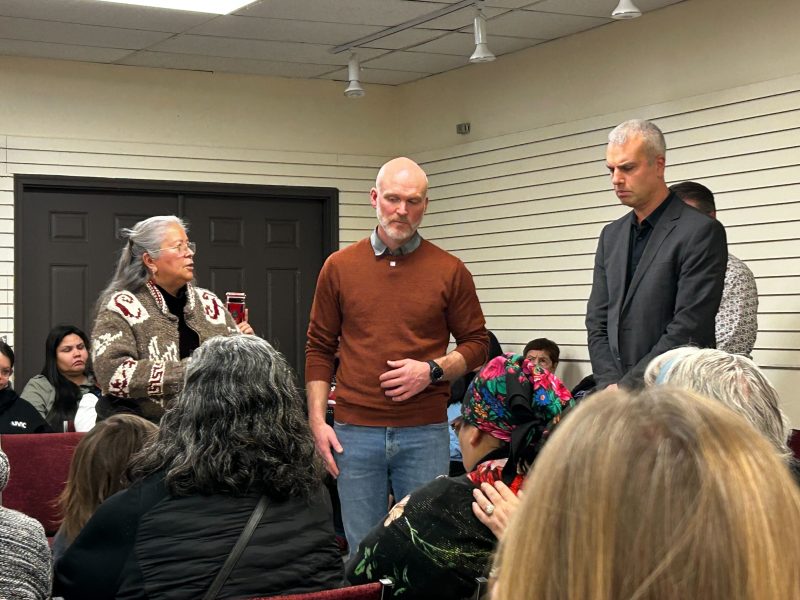
Content warning: This story contains information and discussions regarding mental health, drug use, residential “schools” and other subjects some may find triggering. The Vancouver Island Crisis Line can be reached at 1‑888‑494‑3888. The Indian Residential School Survivors Society crisis line number is 1-866-925-4419.
Shane Jung is more than a fighter, and the place where he spends his time is more than a gym.
Growing up, the Cowichan youth successfully hid from his peers that he was neglected with no safe place to go. Years later, there were few that didn’t know of his drug-dealing escapades. Many events shaped his life, but Shane eventually fought his way up the ranks to become a mixed martial arts (MMA) champion, successful gym owner, father and mentor.
Although his life has had many painful moments, Shane is now using his traumatic experiences to help others.
The 36-year-old operates Black Box MMA, a fight club operating on Quw’utsun Nation territory, known now as Duncan. For years he has given youth a place to train and a pathway to becoming stronger.
Shane has overcome a lot, and so have many of his students.


A tough upbringing
As a child, Shane was forced to become his own role model, due to the lack of any leaders in his life. His experiences with homelessness began when he was eight.
In 1993, when Shane was eight and his brother was 10, they entered the foster care system in Duncan, bouncing from home to home. But not all the families treated them well and, occasionally, the brothers preferred to take care of each other and try to make it on their own.
Shane’s mother was unable to care for him and his brother, not from lack of love but from a cycle of abusive relationships and the addictions she used to cope.
One time she tried to take her own life in response to a partner’s abuse. The brothers found her and were able to get help, which saved her life — but brought the boys back into foster care.
Together they would sneak out of foster homes and adapt to life on the streets for days at a time.
Shane recalls finding shelter under bridges or in the hallways of community centres.
His experience living on the streets, cold and without a bed, was short-lived. However, time spent without a real home and bedroom of his own lasted for many years after this.
The worst part of growing up in that chaotic life was the shaming — from peers and even teachers.
The boys did what they could to hide the reality of their poverty and unstable housing from classmates at Khowhemun Elementary and Alexander Elementary. Before class, they would scrub their shoes with toothbrushes, and they sometimes refused the lunch program even when they were hungry to avoid suspicion from administrators.
A hand up
Shane went from street kid to serious drug dealer. It was a way to taste a life of extravagance that was so far out of reach as a kid. He stopped maintaining good grades in school and instead, focused on his newfound success in an organization that eventually made close to $1 million per year in street drug sales, he says.
When he was arrested in a sting operation, Shane recalls it was no surprise, and he knew it was time to get out.
“I always knew that when I got caught, which was inevitable, I was going to give it up. I was done. I didn’t realize the pinnacle I would reach when I finally got caught,” Shane says.
“From the very top, back to being with nothing.”
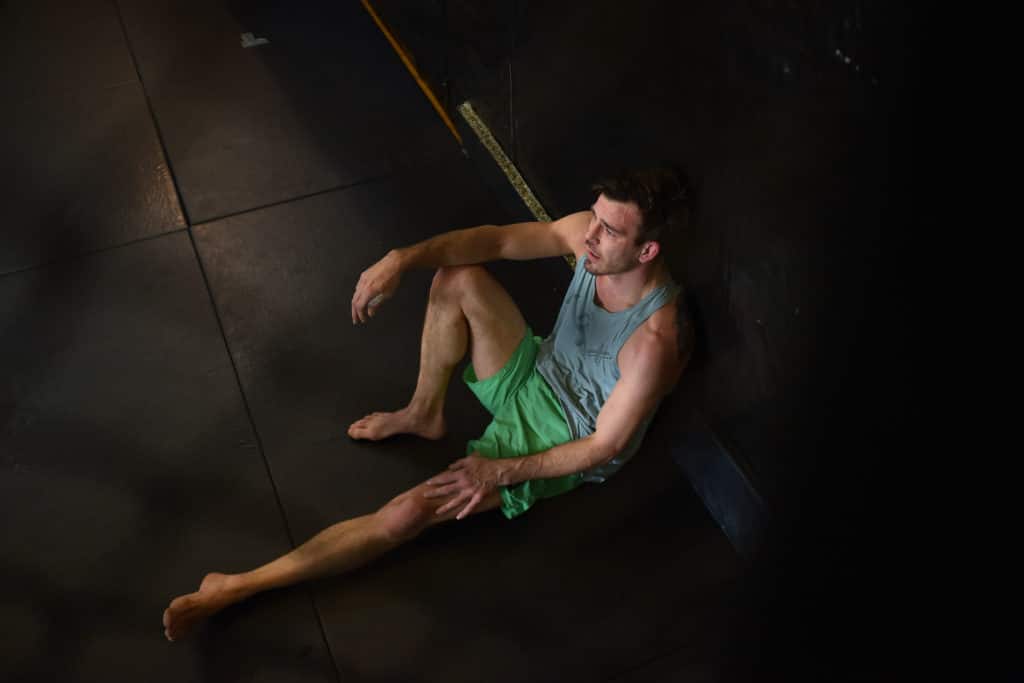
Shane managed to break the cycle but couldn’t do it alone. After spending a year serving a conditional sentence for drug dealing, his then-girlfriend and now-wife Talia supported him, which is why he was able to return to a non-criminal life.
With the support of Talia and his mom, he started the gym.
At first, he and his friends just needed somewhere to practice, but the space has evolved far beyond Shane’s expectations.
Today, Shane says he’s turned things around. He’s now protecting his two daughters from the life he experienced, which is why he bought a house outside of town. His mother, too, overcame a lot before passing away.
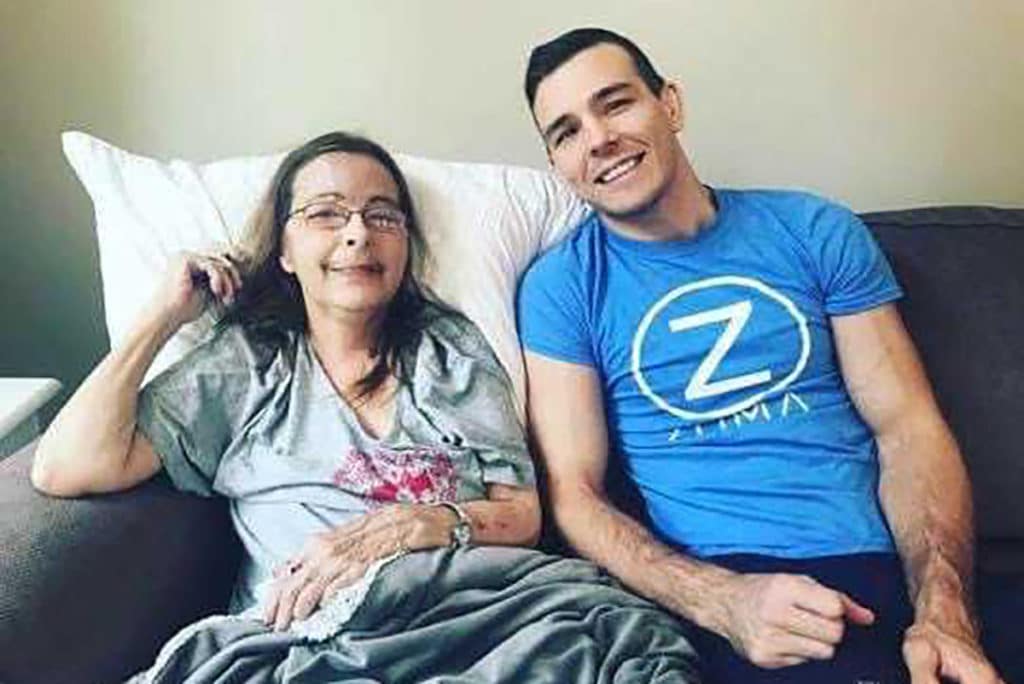
“My mom built me. This is why I am this way. It’s why I’m clean, you know what I mean?” he says. “She taught me how to clean, she taught me to cook, she taught me to take care of myself. So she wasn’t a bad mom.”
And she turned things around when Shane’s kids were born, he recalls. She wasn’t a perfect mom, he says, but as a grandma, she was a ten out of ten.

One in four children in Cowichan lives in poverty, still
Shane’s story is unique, but in Cowichan, stories of childhood struggles rooted in poverty, abuse and addiction are all too common.
The Cowichan region, to many, is a place of natural beauty and prosperity. But there’s another side to this place. Here, children are more likely to live in poverty, more likely to go hungry and more likely to be taken into the child welfare system.

According to a study by Island Health, the rate of youth and children in care has decreased across B.C. in the past five years, as well as on Vancouver Island as a whole. In the Cowichan Valley, however, the number of youth in care continues to increase.
“The rate of children and youth in care for C.V. [Cowichan Valley] South is much higher than in B.C. and Island Health overall,” reads the report.
As of 2018, there were 24.2 children per 1,000 in care, compared to the provincial average of 6.9 per 1,000.
In Canada, foster care involvement has been associated with a number of intersecting issues for young people, including housing instability and homelessness, documented in the Canadian Observatory on Homelessness Policy Brief. The study also documents the relationship between foster care and academic underperformance, poor mental and physical health, underemployment and more.
A universal issue
A universal issue, it seems, for youth seeking support in the Cowichan Valley is the lack of helping hands. Those who wish to speak to a counsellor through Cowichan Valley Youth Services often wait at least four months, even if they are thinking about suicide, says Madi Innes, a youth counsellor with the organization.
“It hurts me to see the youth that are coming to me talking about why they’re experiencing these things and what’s going on,” she says. “But it also hurts to hear that the youth that are causing that pain are probably not receiving the love and support that they need as well.”
Anxiety, depression and trauma from childhood are recurring themes she encounters. Local youth lack access to family resources, as well as spaces to exercise, meet peers and be themselves. COVID-19, Innes explained, has exacerbated this.
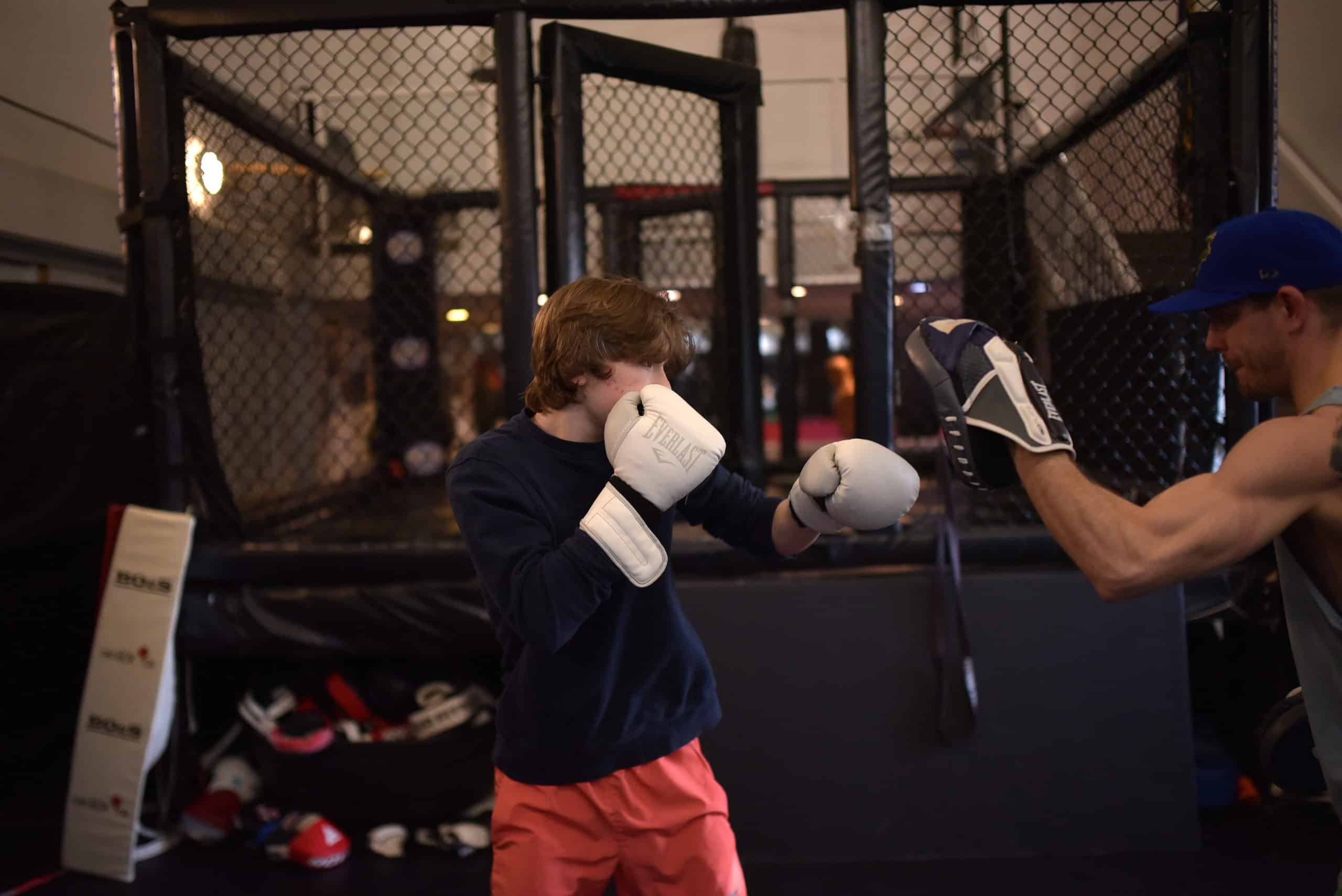
She sees the outcomes of inequity and disparity in her work.
“I think that’s what scares me the most about our community — the gaps in service that create these cracks that the youth can fall into. No matter how hard they try — they’re amazing — it’s the community itself that is failing the youth.”
She also sees a dramatic socioeconomic difference creating a divide in the Cowichan Valley. Here, a lack of public transportation creates barriers for those who need support.
“There’s so many layers to what can impact the youth’s upbringing and how they develop and grow,” she says.
Creating spaces where the community, young and old, can gather to discuss why trauma continues to affect the lives of youth in the Cowichan Valley would be a big step towards eliminating it, according to Innis.
“If we’re not connecting with the youth and hearing what their actual experiences are, and hearing what is actually happening for them, we can’t really help.”
Innes envisions a “one-stop-shop” for youth to receive support in the Cowichan Valley. A youth hub, with free access to counselling, a nurse practitioner, a drop-in space, activities and more.
It would be a place for youth to connect with healthy adult role models. According to Harvard researchers, “The single most common factor for children who develop resilience is at least one stable and committed relationship with a supportive parent, caregiver, or other adult.”
Formal youth supports are great, but any stable connection between a young person and a supportive adult is extremely powerful. And in that regard, Shane has definitely stepped into the ring.
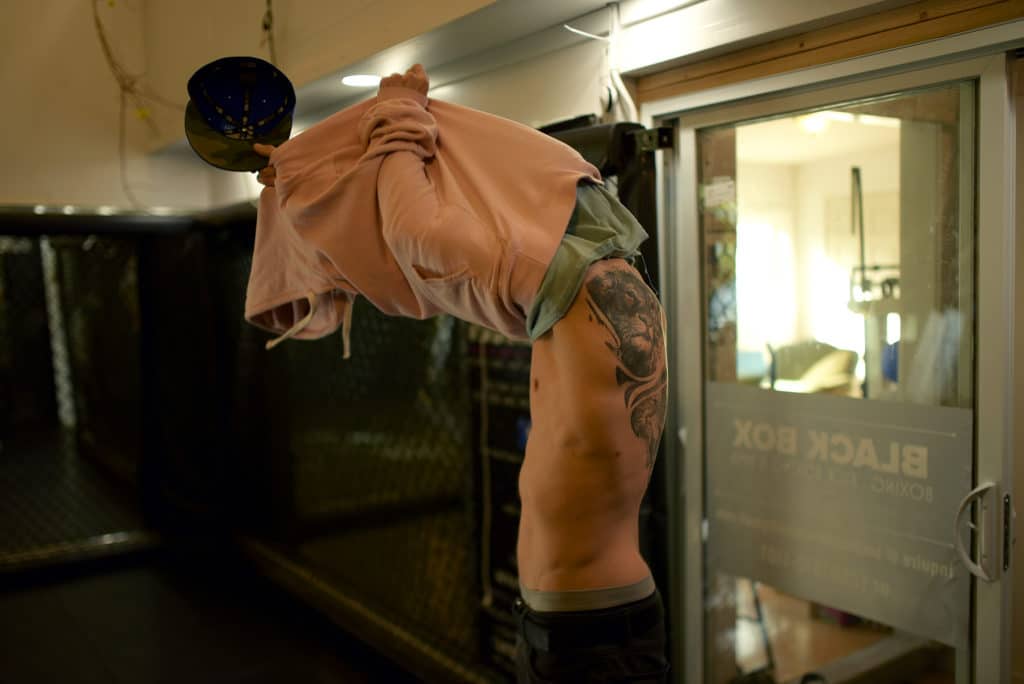
The ripple effect
At Black Box, Shane prioritizes youth who are troubled, homeless or have other barriers to support, and uses his skills as a fighter and coach to help them towards a brighter future. Since opening in 2013, over 1,200 fighters have passed through the Black Box doors. One of them was Trent Jack.
Recently, in a Nanaimo boxing gym, a fit, Stz’Uminus man stood in the middle of the ring, dressed in black shorts and red shoes, and adjusted his knuckle tape. He paced back and forth to stay warm while looking at himself in the mirror.
Twenty-three-year-old Trent carried himself with confidence, and when teammates stepped into the ring to train with him, they quickly adapted to his level of intensity.

His peers training around him watched with admiration, apparently excited about the attention he’s receiving from the ringside photographer.
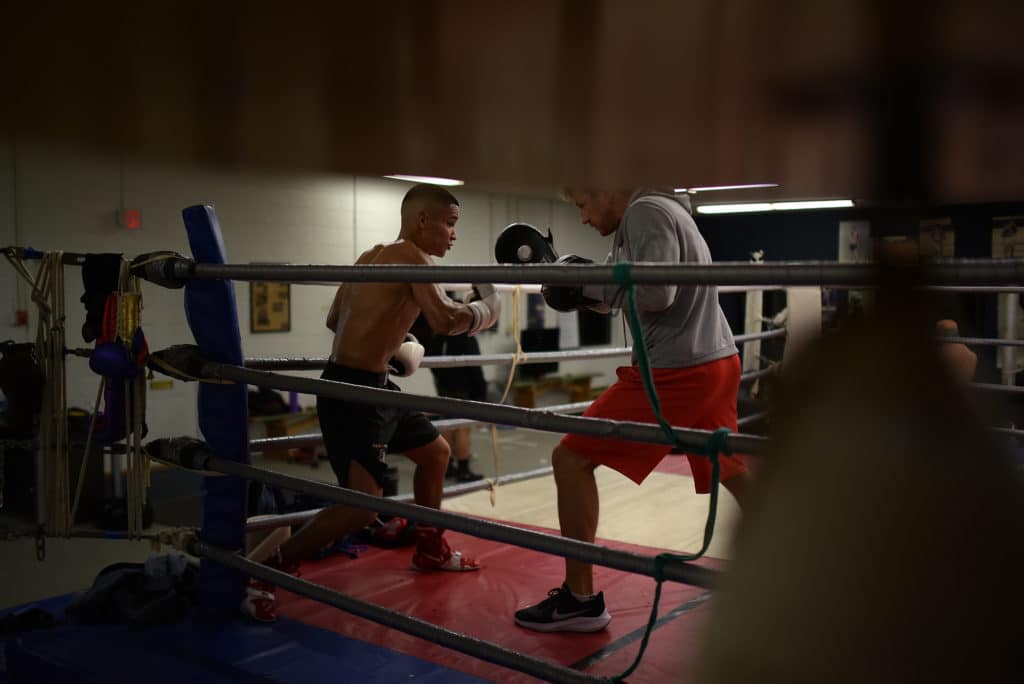
Outside the ring, Trent is soft-spoken and his eyes are filled with compassion. He smiles with his eyes, thinks before he speaks and his words come from the heart.
“I was lost — a lost soul for sure,” he says, referencing his anything-but-perfect childhood.

He grew up in Chemainus, Crofton and Duncan, not with one family, but many. From the age of three, he transitioned in and out of the foster care system until aging out at 19.
At 13 he entered the world of martial arts and eventually started training at Black Box MMA with Shane. Trent looked up to Shane and says he trained him well. Like Shane, Trent says getting involved in illicit drugs negatively impacted his teen life
“I got into drugs myself in the Cowichan Valley, got into quite a bit of trouble. A conflict with my grandmother led to me being kicked out, and being on the streets in Duncan,” Trent says. “I started dealing drugs, doing drugs. My drug of choice was crystal meth; that took a lot out of me.”
When he was experiencing homelessness in the Cowichan region at 15 years old, Trent remembers there being nowhere to go, even in the winter. He talks about not being able to access the one shelter in town at the time — you had to be 18 to stay.
“It’s a quite big issue, not just in the Cowichan Valley but all over Canada. A lot of youth in care are on the streets. It’s really sad, it’s an issue that has to be worked on,” says Trent.

Much of the trauma that Trent has experienced, his family has experienced before him. And he fears more generations of Indigenous youth will continue to feel this. In the lives of his family, friends, and community, the effects of intergenerational trauma continue to hold fast.
Not enough time has passed in order to heal, he explained.
Trent’s grandfather told him this is called the ripple effect, and the first residential “school” was like the first pebble tossed into a pond. Every ripple symbolizes another generation affected.
A new beginning
Trent credits Shane for helping him get off — and stay off — drugs. He’s committed to choosing a different path, to working towards healing some generational wounds for himself and for future generations.
“[Shane] was a great role model, trained me really well. He’s a great athlete, and also a champion. I look up to him for sure,” says Trent.
Trent says Shane helped him in many ways, including getting sober, fit, and healthy. Thanks to Shane, Trent has adopted his mentality as a champion fighter.

He remembers the night when Shane called him out for using drugs. This was the start of his journey towards healing.
“He just said it, blatantly: ‘What are you doing? What drugs have you been doing? I could see it in you, why are you so skinny, man?’ I was like, ‘I’m doing meth,’” Trent recalls. “He’s like, ‘What the fuck man, you know I lost my best friend to drugs. You shouldn’t be doing that.’
“He really helped me get away from that […] He helped me get sober. I look up to him.”
Now 23 and training out of Nanaimo, Trent continues to wear the Black Box MMA shorts he wore while winning his first kickboxing tournament. His cover photo on Facebook still shows him winning the gold medal in a tournament at Crusher Combat Sports, for Black Box MMA, seven years ago.
That night, no other junior players showed up to fight. So naturally, Trent beat the adults for first prize.
He’s now a part of another group; Team 700, an all-Indigenous boxing club. The team aims to support youth, and particularly those impacted by the child welfare system.
Trent wants to be the best. His goal is to one day be crowned provincial champion. It’s not hard to believe he’ll do it — he’s already overcome so much.

Breaking the chain
Trent is doing his part to break a chain of trauma passed down in his community.
He’s focused on fighting, but also on his education. He hopes to eventually work with youth and pass down the support he received from Shane.
“The last couple generations [faced] abuse, alcohol and drugs, I want to put an end to that. Start focusing on boxing, going back to school, getting into university and getting into child and youth care work,” Trent says.
He hopes to inspire youth who are struggling like he once did. Separating himself from his addiction to drugs was difficult, he admits. But if you’re determined to stop using them, you can do it, Trent says.
“If I can do it, anyone can do it. That’s what I believe,” he says.
Trent says his positive mindset has started to spread to others in his family, including his younger siblings.
“Them seeing me post my stuff, me training and doing all this, they’re getting motivated, they’re getting that lightbulb spark like ‘I need to get out of this and start doing that.’ … It’s really cool. It’s a good feeling.
To other youth who may be struggling, Trent has a clear message: you’re not alone.
“There’s a lot of youth out there that have gone through the same stuff. There’s a lot of resources, there’s a lot of help out there. You’ve just got to reach out.
“Find that help. You’re not just going to get it given to you.” [end]



